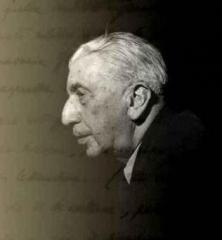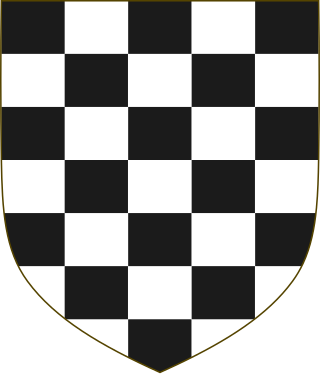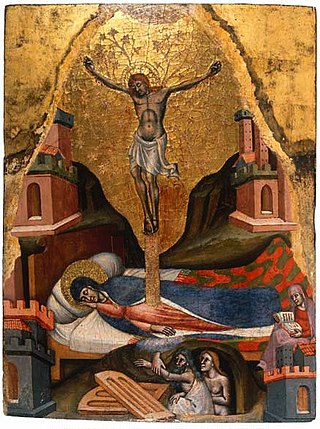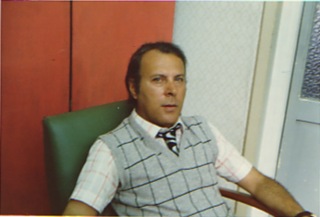Orfeo Orfei (Massa Lombarda, 1836 - Bologna, 1915) was an Italian painter, mainly of genre working class subjects, at work or play, often in situations with touch of irony.
Contents

Orfeo Orfei (Massa Lombarda, 1836 - Bologna, 1915) was an Italian painter, mainly of genre working class subjects, at work or play, often in situations with touch of irony.

He was a resident of Bologna. Among his works are Il pittore di ventagli and L' ombrellaio. In 1888 at Bologna, he exhibited La conciliazione. [2] He helped restore the frescoes of the Rocca Malatestiana in Cesena. [3]

The Accademia di Belle Arti di Bologna is a public tertiary academy of fine art in Bologna, in Emilia-Romagna in northern Italy. It has a campus in Cesena.

Antonio Balestra was an Italian painter of the Rococo period.

Vitale da Bologna, also known as Vitale di Aymo de' Cavalli or Vitale degli Equi, was an Italian painter of the Early Renaissance.

Roberto Longhi was an Italian academic, art historian, and curator. The main subjects of his studies were the painters Caravaggio and Piero della Francesca.

Alessandro Marchesini was an Italian painter and art merchant of the late-Baroque and Rococo, active in Northern Italy and Venice. He first trained in Verona with Biagio Falcieri and then with Antonio Calza. He then moved to Bologna, to work in the studio of Carlo Cignani. He is described as gaining fame for his allegories with small figures. He painted in for the church of San Silvestro, Venice; and for the church of Santo Stefano, Verona. He is also remembered for recommending a young painter, Canaletto, to the Lucchese art collector Stefano Conti, stating that he was like Luca Carlevaris but with a sun shining. Among his pupils is Carlo Salis.

Pittura infamante is a genre of defamatory painting and relief, common in Renaissance Italy in city-states in North Italy and Central Italy during the Trecento, Quattrocento, and Cinquecento. Popular subjects of pittura infamante include traitors, thieves, and those guilty of bankruptcy or public fraud, often in cases where no legal remedy was available. Commissioned by governments of city-states and displayed in public centers, pittura infamante were both a form of "municipal justice" and a medium for internal political struggles.
According to Samuel Edgerton, the genre began to decline precisely when it came to be regarded as a form of art rather than effigy; the power of the genre derived from a feudal-based code of honor, where shame was one of the most significant social punishments. As such, pittura infamante has its roots in the doctrines of fama and infamia in ancient Roman law.

The Pepoli family was an Italian aristocratic banking family of Bologna, in northern Italy. They were lords of the city for thirteen years in the fourteenth century. A branch of the family moved to Trapani in Sicily and were granted several feudal lordships and baronies.

Attilio Pratella was an Italian painter, noted for his landscapes and realistic scenes of Neapolitan life.
Antonio Coma (1560–1629) was an Italian composer. He was born in Cento, Ferrara, and came from a notable family of musicians. He may be the subject of a painting attributed to Guercino.
Giovanni Battista Armenini or Armanini (1530–1609) was an Italian art historian, critic, and academic. He was born and died in Faenza. His main contribution was the publication in 1587 of the theoretical treatise on the practice of painting, titled De veri precetti della pittura. Armenini describes that he had the opportunity to travel through Rome, Naples, Milan, Genoa, Venice and other cities of Italy for nine years. In 1564, he became rector of the church of San Tommaso in Faenza.

Simone di Filippo Benvenuti, known as Simone dei Crocifissi or Simone da Bologna, was an Italian painter. Born and died in Bologna, he painted many religious panel paintings, and also frescoes in the churches of Santo Stefano and San Michele in Bosco, both at Bologna.

Jacopo di Paolo was an Italian painter and miniaturist active in Bologna in the fourteenth and fifteenth centuries.

William Girometti was an Italian painter of Surrealist influence.
Gaetano Belvederi (1821-1872) was an Italian painter, active in Bologna.

Tiburzio Passarotti or Passerotti was an Italian painter, primarily of religious subjects.

Pietà with Saints Clare, Francis and Mary Magdalene is a 1585 oil on canvas painting by Annibale Carracci, now in the Galleria nazionale di Parma.
Giuseppe Fiocco was an Italian art historian, art critic, and academic. He is known for his research and writings on Venetian and Florentine artists.

Andrea Benetti is an Italian painter, the author of the Manifesto of Neo Cave Art presented in 2009, at the 53rd Venice Biennale, at the Ca' Foscari University.
Eugenio Riccomini was an Italian art historian. He died on 25 December 2023, at age of 87.